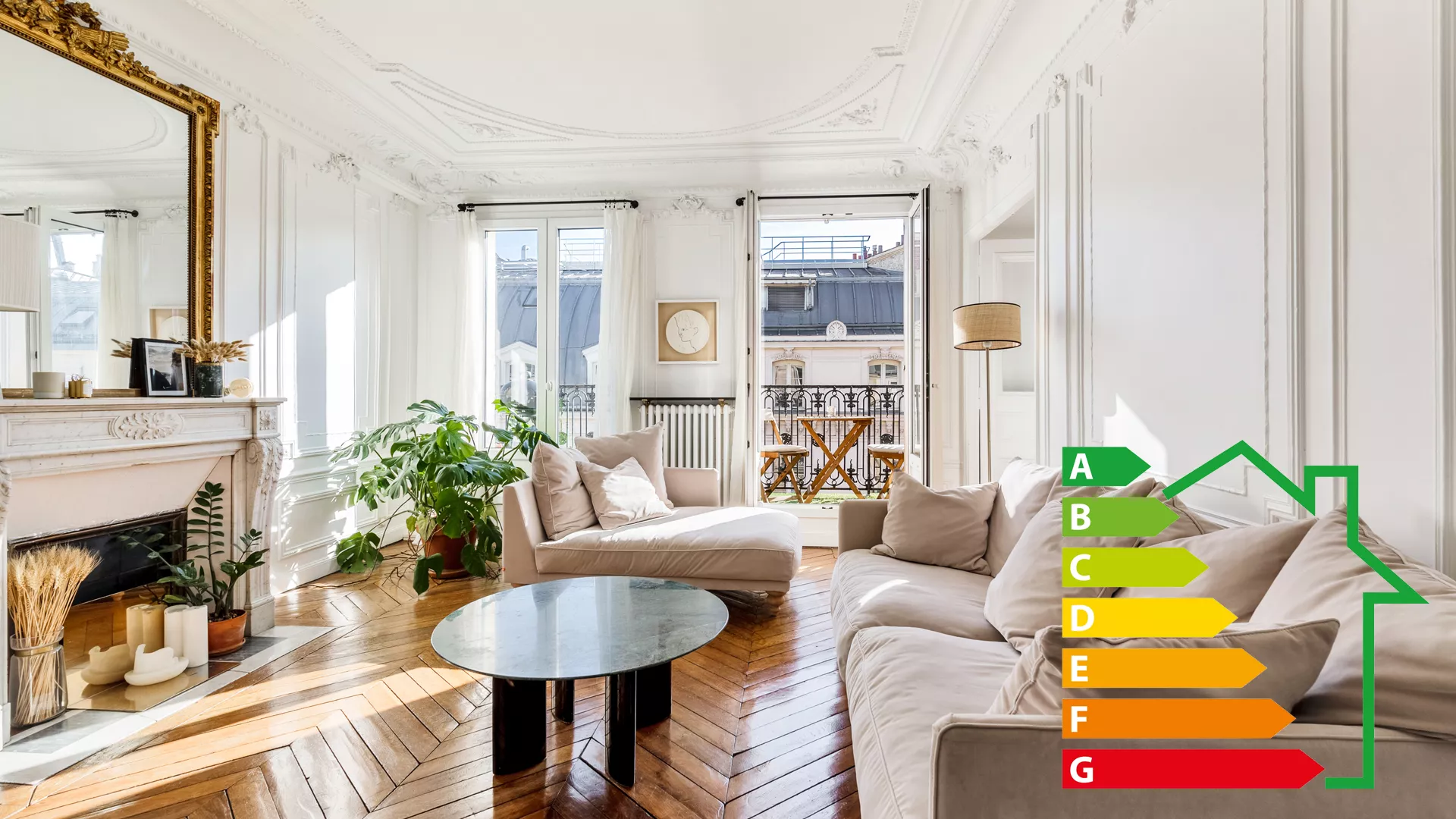All about the DPE
The Climate and Resilience Law adopted in 2021 placed the Energy Performance Diagnosis (DPE) at the heart of real estate issues in France. This essential document assesses the energy consumption of a home or building and informs buyers or tenants about the property's energy performance. The DPE has thus become a strategic tool for the energy transition, encouraging property owners to undertake renovations to enhance their property, reduce their environmental impact, and meet new regulatory requirements. Here’s a comprehensive overview of this reform and its implications for landlords.
Les principaux points à retenir
• Obligatoire et stratégique : Le DPE est essentiel pour vendre ou louer un bien, en informant sur sa performance énergétique et son impact climatique.
• Passoires thermiques à rénover : Dès 2025, les logements classés F et G seront progressivement interdits à la location, renforçant l’importance des travaux de rénovation.
• Impact sur la valeur immobilière : Un bon classement énergétique accroît l’attractivité et la valeur d’un bien, tandis qu’une mauvaise note peut entraîner une dévalorisation.
• Validité et mise à jour : Valable 10 ans, il doit être actualisé après des rénovations significatives pour refléter les nouvelles performances.
• Un outil pour l’avenir : Plus qu’un diagnostic, le DPE accompagne les propriétaires vers des décisions éclairées, conciliant valorisation du patrimoine et enjeux écologiques.
What is the DPE?
The DPE, mandatory when renting or selling a property, ranks homes on a scale from A to G according to their energy performance. Poorly ranked homes, often referred to as “energy sieves,” are progressively being banned from the rental market: properties rated G from January 1, 2025, F-rated properties by January 2028, and E-rated properties by January 2034.
The DPE is now based on the so-called 3CL method, which takes various factors into account, such as indoor temperature, window glazing thickness, property area, and heating system. This method has highlighted a specific issue for small spaces: these properties are often penalized due to the per-square-meter calculation of hot water consumption, unfairly categorizing them in lower energy ratings. In July 2024, a new reform introduced flexibility for properties smaller than 40 square meters.
See our dedicated article on the July 2024 adjustments to the reform.
The DPE: a tool for energy transition
The purpose of the DPE is to raise awareness among owners and tenants about their property’s energy impact. Based on the results, it may include recommendations to improve the property’s energy performance, such as installing up-to-date windows, improving insulation according to current techniques and materials, or replacing an old heating system with a more energy-efficient solution.
A mandatory step
The DPE must be provided from the very beginning of the transaction, whether in real estate listings or during visits. It applies to both individual homes and apartments in co-owned buildings, whether new or old.
Failure to present the DPE may result in penalties for the owner, and the transaction could be canceled or challenged.
How is it conducted?
The DPE, performed by a certified assessor, evaluates the energy performance of a property on-site. A simple visual inspection is no longer sufficient: the assessor must rely on invoices detailing the technical specifications of renovation work, including for common areas. Without these documents, energy savings may not be accounted for, which could affect the final rating. The assessor takes into account several parameters, including:
- Thermal insulation (walls, roofs, floors);
- Type of heating and hot water systems;
- Quality of windows and glazing;
- Ventilation of the property;
- Size and layout of the property.
The two DPE labels
The DPE consists of two distinct labels:
- Energy Label: It rates the property from A to G based on its primary energy consumption (expressed in kWh per square meter per year).
- Climate Label: It assesses greenhouse gas emissions generated by this consumption, also rated from A to G.
These two pieces of information help future occupants better anticipate their energy consumption and the environmental impact of the property.
What is the validity period of the DPE?
A DPE is valid for 10 years, provided no major renovations are carried out in the meantime. If energy efficiency improvements, such as insulation or heating system changes, are undertaken, it is recommended to renew the DPE to reflect the property’s new performance levels.
DPE and “Energy Sieves”
One of the major goals of the DPE is to combat “energy sieves”: properties rated F or G that consume excessive energy and are responsible for high greenhouse gas emissions. In France, authorities have set a progressive timetable that will prohibit renting these energy-intensive properties starting in 2025.
Thus, the DPE has become a crucial tool for identifying these properties and encouraging their renovation.
DPE and property value
The DPE also has a direct impact on property value. A well-rated property is generally more attractive to buyers or tenants, as it offers assurances of lower energy consumption and reduced bills. Conversely, properties rated F or G risk losing value, especially in light of upcoming restrictions on renting them out.
In conclusion
The DPE has established itself as an indispensable tool for anticipating upcoming changes in the real estate market for both property owners and tenants. With environmental concerns on the rise and tightening regulations each year, it is essential for property owners to understand the DPE’s impact on their property’s value and compliance.
More than a simple diagnostic tool, it has become a strategic indicator guiding investment decisions.




